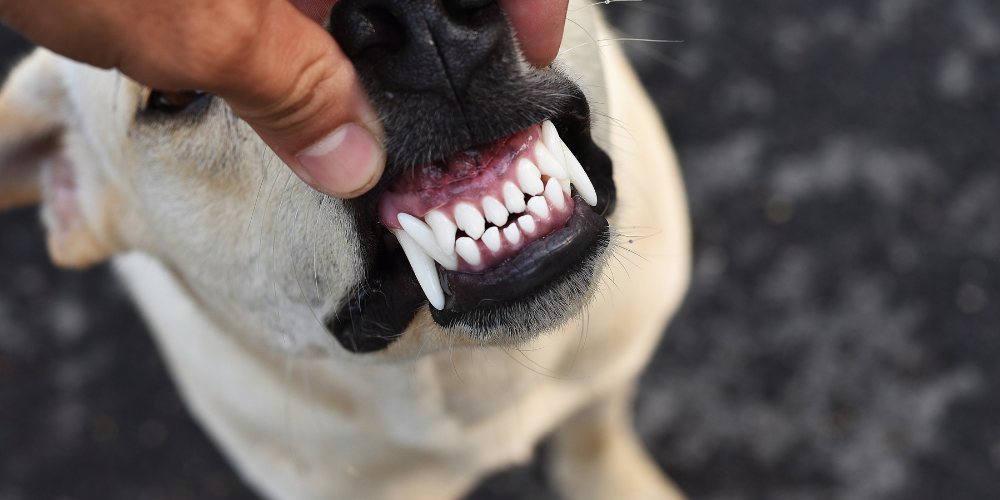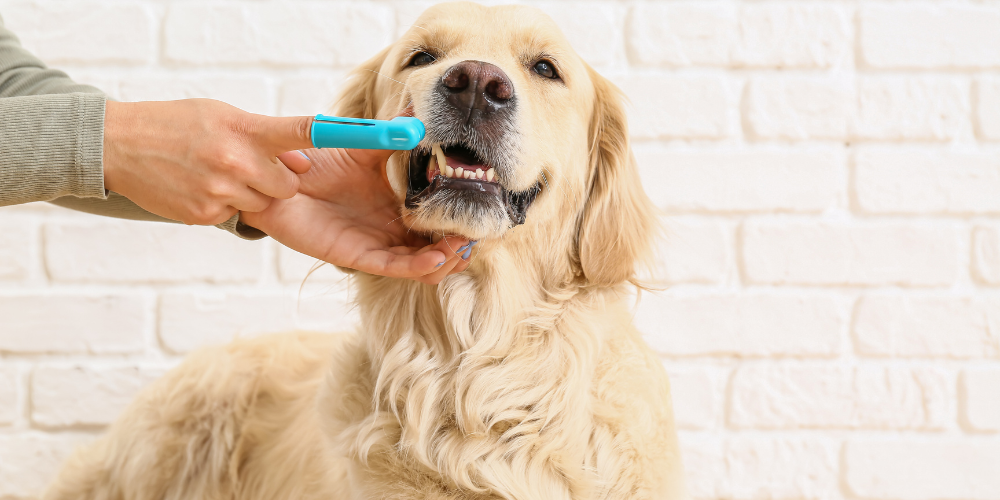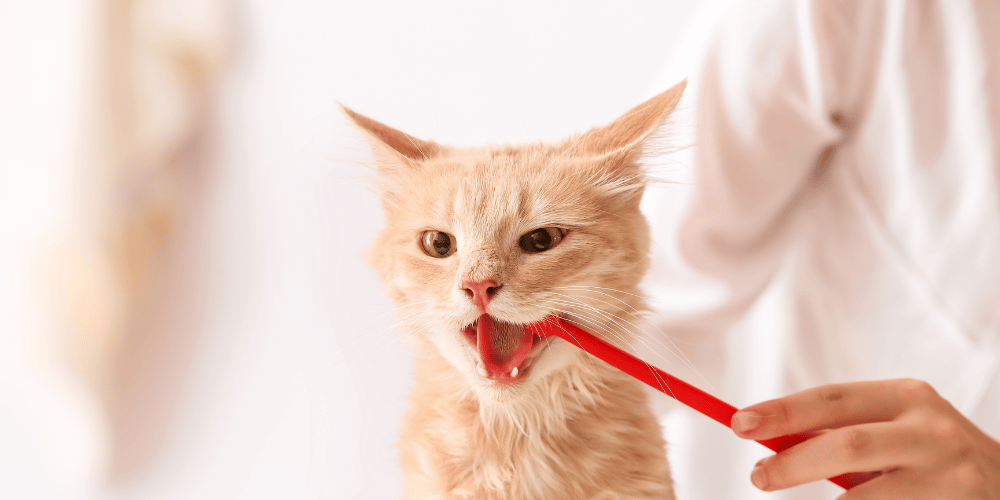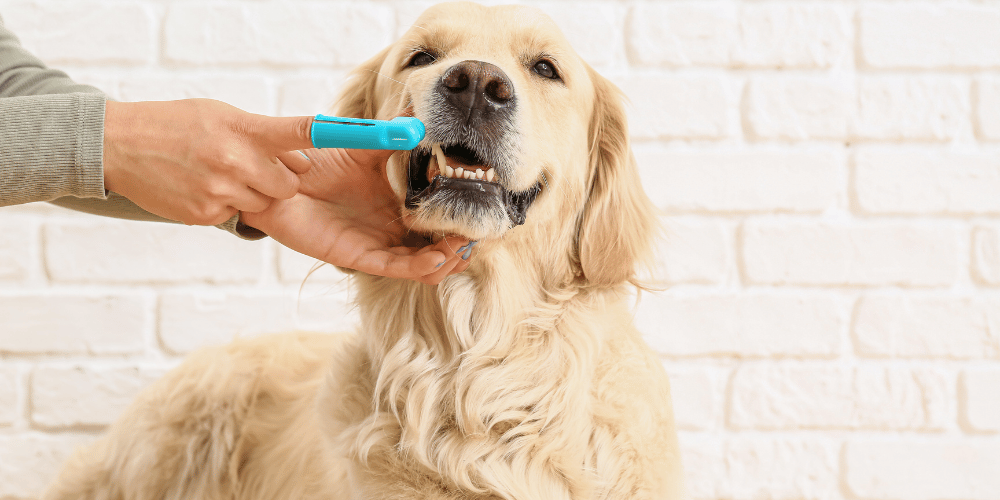
Did you know that around 80% of dogs and 70% of cats have dental problems by the age of three? Regular check-ups with your vet are super important to catch and prevent these issues early. Combining these check-ups with a good at-home dental routine can make a big difference in your pet's health. Plaque and tartar aren’t just annoying – they can cause serious health problems if you don’t take care of them.
Plaque vs Tartar: What’s the Difference?
Plaque is a sticky film full of harmful bacteria that sticks to their teeth and gums. If you don’t clean it off, it mixes with minerals in saliva and hardens into tartar. Tartar is a tougher, more dangerous problem that can lead to tooth decay, gum disease, and serious health issues. Think of plaque as a sneaky spy that, if ignored, builds a strong fortress – tartar!
How to Prevent Plaque
Brushing your dog’s teeth with pet-safe toothpaste is your first line of defense. Dental treats and dry kibble can also help fight plaque, acting like secret agents cleaning your dog’s teeth while they eat. The crunchy texture of dry kibble helps scrape plaque off your dog's teeth, and the increased chewing time stimulates saliva production, which naturally helps clean the teeth.
Try specially formulated kibble like Hill's Science Diet Dog Oral Care to balance nutrition and improve dental health.
What Is Dental Disease?
Dental disease is a common issue in pets and can lead to serious health problems if left untreated. The symptoms of dental disease include bad breath, red or bleeding gums, difficulty eating, pawing at the mouth, and loose or missing teeth. Causes of dental disease include plaque and tartar buildup, poor oral hygiene, and genetics. Treatment typically involves professional cleaning by a vet, which may include teeth polishing, ultrasonic descaling, and in severe cases, tooth extraction. Preventative measures such as regular brushing, dental chews, and routine veterinary check-ups are essential to maintain your pet’s dental health and prevent the progression of dental disease.
How to Brush Your Dog’s Teeth
Regular brushing is essential for preventing plaque build-up. Here’s how to do it effectively:
- Choose the Right Tools: Use a toothbrush designed for dogs and pet-safe toothpaste. Human toothpaste can be harmful to dogs.
- Get Your Dog Comfortable: Start by letting your dog taste the toothpaste. Gently rub their gums with your finger before introducing the toothbrush.
- Brushing Technique: Brush in gentle, circular motions, focusing on the gum line where plaque tends to accumulate. Be patient and calm to help your dog feel at ease.
- Frequency: Aim to brush your dog's teeth at least 2-3 times a week, but daily brushing is ideal for the best results.
- Positive Reinforcement: Reward your dog with praise or a treat after brushing to make the experience positive.
By incorporating regular brushing into your dog's routine, you can significantly reduce plaque and tartar build-up, ensuring better oral health and overall well-being.
Signs of Healthy Teeth and Gums
Knowing what healthy teeth and gums look like can help you monitor your pet's dental health. Healthy gums are pink (not red or white) and teeth should be clean without brownish tartar buildup.
Best Products for Your Dog’s Dental Care
Want the best tools for your dog's dental care?
- Use a dog-specific toothpaste and toothbrush or finger brush for a thorough clean.
- Dental treats such as Greenies, ZamiPet Dental Sticks, or OraVet Dental Chews are an easy way to keep your dog’s teeth nice and clean.
- You might also consider water additives that help control plaque and freshen breath. Products like PlaqueOff can prevent plaque from sticking and make tartar easier to remove. This seaweed-based powder, when sprinkled on your dog’s food daily, can be very effective.
Always choose products that are vet-approved to ensure they are safe and effective.
When to See the Vet for Dental Issues
If you notice bad breath, red gums, or your dog has trouble eating, it’s time to see the vet. They can do a professional cleaning and, if needed, perform treatments like teeth polishing, ultrasonic descaling, or even surgery. Don’t wait until your dog is in pain – regular check-ups can prevent many dental problems.
Do Cats Have Dental Problems Too?
Wondering if cats face the same dental issues? Yes, they do! Cats can also get plaque and tartar, and the same preventative measures apply. Regular brushing and dental chews are just as important for our feline friends. Look for signs like bad breath or reluctance to eat dry food as indicators that your cat might need dental care. Try PlaqueOff for cats, Greenies or FingerTip Wipes.


